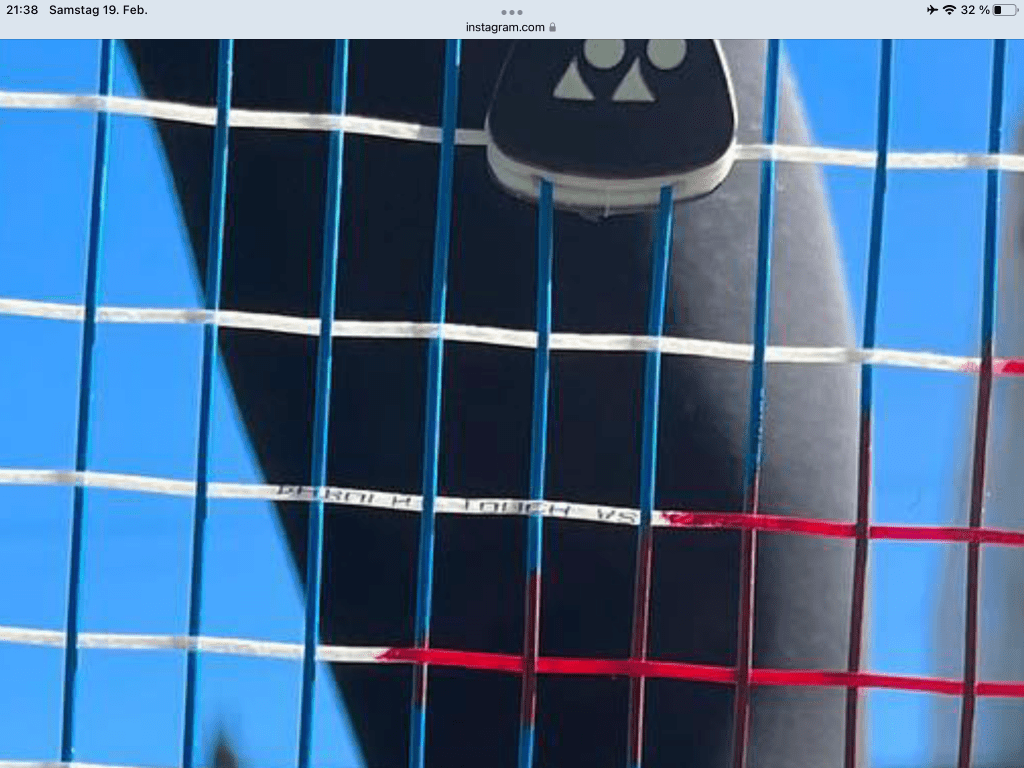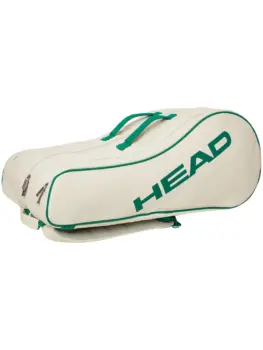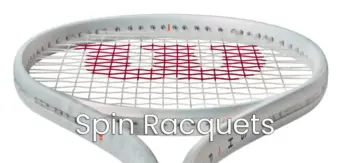One of our new contributors is Sean McAvoy, who has written this interesting article about different string gauges in mains and crosses.
Different string gauges in mains and crosses
When stringing hybrids, people usually consider what strings should go in the mains and crosses. However, the thickness of each string is often less discussed. Some people may be able to benefit from a hybrid or full bed with two different string gauges. While it’s fairly uncommon to see this, players can mitigate the disadvantages of a particular string or setup they may like by changing string thicknesses.
ARE THESE SETUPS COMMON ON TOUR?
Due to the level of spin and power used on the ATP and WTA tour, Professionals usually use thicker strings in the same gauge. As outlined below, thicker strings have better durability, control, and maximum spin potential. Thinner strings may not hold up well to the extreme speeds seen on tour. Furthermore, thick mains provide better snap back for players who hit the ball hard enough to move them.
This is why a spin-heavy player like Rafa Nadal uses a thick, stiff, Babolat RPM Blast 15g at a fairly high tension. The only example of a player using different gauges on tour was Federer, who used Wilson Natural Gut 16g in his mains and Luxilon ALU Power 17g in his cross strings. I have heard some other players are doing this, but nothing I can verify.
COMPARING THINNER AND THICKER STRINGS INDIVIDUALLY
Below, I outline the pros and cons of thinner and thicker strings. It’s very important to remember that string thickness is just one factor that determines the feel and performance of a string bed. The string itself, and the tension it is strung at, play very big roles. Thickness is just one variable you can experiment with. Consider the pros and cons below as the differences between the same string strung at the same tension, just in different gauges.
PROS AND CONS OF THINNER STRINGS
Pros:
Thinner strings can provide a softer, more arm friendly feel.
A thinner string will provide more power.
Cons:
Lower durability
Worse tension maintenance
Less control
PROS AND CONS OF THICKER STRINGS
Pros:
Better durability
Better control
Better tension maintenance
Thicker strings are stiffer strings, which provide stronger snap back for players who hit the ball hard enough to move the strings
Cons:
Thicker, and therefore stiffer strings will be more likely to cause arm pain
Less power
Players with slower swing speeds may not be able to move the strings as much, therefore actually decreasing their access to spin.
USING THICKER MAINS THAN CROSSES
This is the most common way I hear about using different gauges in the same bed. The most common scenario is players looking for more durability and control without as many of the cons of going up a gauge on both the mains and crosses.
However it’s important to note that better durability can be achieved through thicker mains and crosses since a relatively thinner cross will almost act as a “sharper blade.”
Another disadvantage will be decreased tension maintenance of the cross strings. But thinner crosses will give you a softer feel with more power and easier access to spin. Thicker crosses will cause more friction on the mains and therefore, less string movement, and thus less spin.
DROPPING THE TENSION PRODUCES INTERESTING RESULTS
If you are looking for similar benefits without the drop in durability and longevity, simply drop the tension a few pounds in the crosses in your same gauge setup. Going for thinner crosses should probably be the second choice if you find dropping cross tension a few pounds isn’t getting you what you desire. Also, be careful with lowering cross tension too much, as a large difference in tension between the mains and crosses is known to be able to warp or crack some rackets. I wouldn’t recommend dropping the tension in your crosses any more than 3 kg lower than in mains.
I do a little bit of both in my current set up. I use a 16g gut in the crosses(natural or synthetic, depending on the conditions) at 25.5 kg in the mains and Babolat RPM Blast 18g at 23 kg in the crosses. It’s not ideal in terms of durability, but the performance benefits are worth it. I also hit a lot of flatter attacking shots, which helps with durability. I would not recommend this setup to anyone who hits heavy spin consistently.
USING THICKER CROSSES THAN MAINS
This is far less common, as this has far fewer benefits. This is because it will generally decrease power, spin, and softness. However, some people report a crisp, controlled sensation from thick crosses. Also, for people who use a natural gut, synthetic gut, or multifilament in the crosses and polyester in the mains, this can help with durability. If this is something that’s appealing to you, I would give it a try, but most people I have talked to who use different gauges tend to prefer a thicker main. As with most things, the best way to know if it is for you is to try it.
For more reading about strings, check out the following:
Everything you need to know about strings – a YouTube video covering most must-know info.
Our racquet and string course with recommendations
Are strings more important than the racquet?
And there is much more in the string category on Tennisnerd.
















I’m not certain which is accurate, but the information here is frequently in direct contradiction to what Restring says:
https://shoprestring.com/blogs/news/tennis-string-gauge
E.g., this says thinner gauge = more power, Restring says thicker gauge = more power. This says thicker strings are better for control and spin, Restring says thinner gauges are better for control and spin.
Both agree that thinner strings are more comfortable.
Thinner gauges should give more power and spin, but less durability and control. Thicker gauges increase the swing weight, so in that way you get a little more, but at the same time a thinner string will have more trampolining.